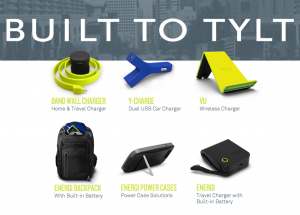You’re probably sick of me droning on about how much I love Co.Design by now (a newsletter put out by Fast Company), but I can’t help myself. They’ve run yet another article I simply must talk about and share.
The article claims that NFC (near field communications) is a technology that could be really magical but somehow hasn’t become so yet because its scope is too broad.
NFC is an extremely low-power radio signal that allows data to hop from a poster or sticker to a system like a smartphone. The writer of the article, Mark Wilson, gives the following example: imagine not just unlocking your car with a wave of your phone but having it launch Bluetooth, stream your favorite Pandora station, launch GPS, and text your spouse that you’re on your way home.
Despite the potential and it being around since 2004, NFC is barely utilized in today’s consumer electronics. Hardware manufacturer, Tylt, makes NFC tags (radio-powered stickers that you can place on anything) and Bluetooth speaker and cellphone care cradles that incorporate NFC. They partnered with software startup Tagstand, an Android app that gets switched on by an NFC trigger (sticker), that can activate all sorts of other apps to carry out tasks automatically.
Together, Tylt and Tagstand can do things like this: a Tylt NFC tag on your nightstand can trigger your Tagstand to turn off alerts and activate the alarm; an NFC tag placed at your desk can tell your phone to open Evernote, tether your phone’s 4G to your laptop, mute your ringer, and remind you in 30 minutes to get off Twitter. Crazy, huh?!
But, as Wilson says, it’s too much for people to get a handle on. Who would have thought a tech company or initiative today could actually be too advanced? Turns out lots of people (thank goodness I’m not alone here) get overwhelmed. Too many choices = no choices made.
So to try to solve this dilemma, Tylt and Tagstand are refocusing a partnership around specific devices like a bluetooth speaker or a phone dock.
As Wilson said, perhaps it’s this “graspability” that can explain why the focus of NFC today has been around payments like Google Wallet or Apple iPhone payments. But only looking at payments sells NFC short since its capabilities are far beyond that.
What do you think it will take for NFC to be appreciated, understood and used by consumers?




Recent Comments